Journal of
eISSN: 2574-8114


Review Article Volume 10 Issue 4
Istanbul Aydin University, Turkey
Correspondence: Asst. Prof. H. Meryem İmre, Istanbul Aydin University, Turkey
Received: July 12, 2024 | Published: July 24, 2024
Citation: İmre HM. Contemporary dress in and modernization from the axis of Atatürk and the Republic. J Textile Eng Fashion Technol. 2024;10(4):172-178. DOI: 10.15406/jteft.2024.10.00385
Clothing is a social phenomenon that shows the existence of human beings on earth and reveals its influence more broadly with every period and change. It has a structure that strengthens communication with the whole of society and individuals. This form of communication improves social position and intercultural interaction botj intellectually and visually.
One of the important building blocks of contemporary and modern social life, which started with the establishment of the Republic of Türkiye, is the clothing revolution and, in parallel, the modernization of the individual's image. Atatürk changed the social position of the Turkish people and restructured Turkish society with the reforms he carried out with a progressive perspective that was free from prejudice and took the West as an example. The first visual impact of the modernization process being established and adopted on solid foundations was the clothing revolution.
Clothing combined with the sociological and psychological sides of society within the phenomenon of fashion has become the face of of innovation and development. Mustafa Kemal Atatürk emphasized his leadership qualities with his forward-thinking, innovative approaches and contemporary clothing. He used his clothing style as a means of communication, affecting the development and change of individuals. During the Republican period, Turkey followed a modern method that supported fashion development and national identity. This method, which will contribute to the construction of national identity, was supported by revolutions. After the clothing revolution that took place under the leadership of Mustafa Kemal Atatürk between 1931 and 1940, the foundations of Turkish Fashion were laid and the contemporary clothing approach for the Republican period began to take shape. In our study, a literature study of the period was conducted and clothing forms were examined through Atatürk's photographs. The way the leadership role in social changes is visually communicated through clothing has been examined. The important features of contemporary clothing in the Republican period, Mustafa Kemal Atatürk's perspective on creating a contemporary individual and society, are explained through the compilation method.
Keywords: contemporary, clothing, Mustafa Kemal Atatürk, society
During the establishment of modern Türkiye, clothing has been an important element in the formation of identity both as individuals and as a society as well as in the shaping of society itself. In the context of social unity, the meaning of clothing and the message it gives in forming a social life have been seen as a symbol of modernization. This symbol is Mustafa Kemal Atatürk's vision, his view of contemporary world fashion, and through this his own clothing being a reference to the society of the time.
After the First World War, global changes and developments, technological revolutions, the prevalence of communication, transportation and communications, industrialization, major steps in economy and the resulting political events created the new world order. The change in traditions, customs and mentality that constitute the cultural and social structure of society has begun to take place with small steps. Along with geographical discoveries starting in the 15th century and the innovations brought by the industrial revolution, the conflict between the ongoing modernity and traditions of the Tanzimat Period of the Ottoman Empire has accelerated. In particular, during the Republican Period the traditional understanding of clothing was left to the contemporary understanding of fashion becoming unique, simplified and liberated. At this stage the role model that was put forward was Mustafa Kemal Atatürk, who is the strongest example of leadership. He set an example for the newly established Turkish State with his simple, stylish and original choices. With his innovative structure and forward-thinking, he became a leader who strongly used the communication feature of fashion which gives society a message.
A brief history of clothing from the tanzimat era to the republican period
When we look at the cultural history of the Turks, especially with the influence of nomadic life and equestrian culture, they preferred more comfortable and leather clothes.1 With the acceptance of Islam and their settlement in Anatolia, their clothing styles changed. In accordance with the requirements of settled life, clothes made of woven fabrics were preferred.2
In the Ottoman Empire, where differences such as beliefs, colors, traditions and customs were reflected in a wide geography covering Asia, Africa and Europe, clothing developed in a more colorful spectrum than the usual. Differences between the palace and the public varied according to profession and nationality. Eventhough the clothing style is the same, the clothing between the palace and the public is blended with geography and local culture.3 In terms of fashion, over the centuries there had been no significant change in the public’s clothing to establish unity or to determine a general identity.
During the Ottoman period, civil servants who wore clothes such as caps (kavuk) and robes that showed their social position and rank, clergy who wore turbans on their heads, and members of other religions wore unique clothing.4 In this period, it is impossible to talk about unity in terms of clothing in society.5 In addition to Abayas and Caftans, which are known as men's and women's clothes, crests and headdresses with different names for each sultan’s were used.6 Color in shoes was important and varied depending on a person's profession. Officers wore yellow shoes and the clergy wore blue ones.7 Muslims wore yellow shoes, Jews wore black shoes. The colors were also shaped according to the beliefs of communities. Since green was a sacred color, Jews were prohibited from wearing it. The color white was used especially in the headdresses of Muslim men. Jews, who were non-Muslim subjects, wore black or dark clothes when they went out (Picture 1).1
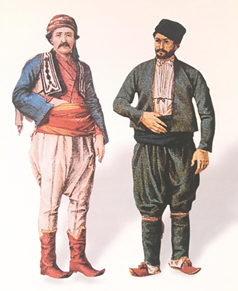
Picture 1 Example of clothes worn in public (Burçak Evren- Dilek Girgin Can: Foreign Travelers and Ottoman Women).
Men's clothing also varied in the Ottoman Empire. Mintan and cepken are most commonly known as outerwear. The mintan had long sleeves, a slit at the cuff, and was long enough to cover the hips. The skirt part was worn tucked into trousers, shalwar or trousers, and a cepken, vest or jacket was worn over it (Picture 2).
The Ottoman Empire, which expanded its territory until the 17th century, could not follow the changes in art and literature that began with the Renaissance in Europe and in the same way neither the developments in science or technology. Only at the beginning of the 18th century, change in clothing began which was primarily in the military field. The modernization movements that started with the Tulip Era, which was effective between 1718 and 1730, spread over a period of two centuries.The dimensions of the change, which started first and foremost with education, law and foreign relations, also led to the change of military clothing.2
During this period, for the first time, educated Ottoman bureaucrats were temporarily sent to capitals of Europe as ambassadors. They reported their observations and the information they’ve collected about European culture to Istanbul. These informations formed the basis of change in military clothing during the period of Selim III (1789-1807). The soldiers of the established Nizam-ı Cedid were dressed in narrow-legged, loose-fitting trousers and long shirts called Şubara.8
The clothing of the western military army established by Mahmud II instead of the Janissary Corps was also renewed as jackets, trousers, fez and boots. Under the influence of the modern order and clothing style that started in the military, during this period Muslim women of the palace and the upper class adopted the European clothing style. Thus, the path of modernization in clothing starting from the palace, to the upper class families with of upstanding social position, and eventually to the public was reflected. Before outerwear the change started in accessories such as gloves, socks etc. In general people acquired these accessories and new fabrics through those who went to Europe or from those who had relatives there.9 Change, especially in women's clothing, began during this modernization process. Abaya and yashmak, worn until the 19th century, which has been the most important women's garment for centuries, lost their place in clothing. Abaya and yashmak were replaced by II. During the reign of Abdülhamit (1876-1909), he abandoned the veil and chador (Picture 3) (Picture 4).1
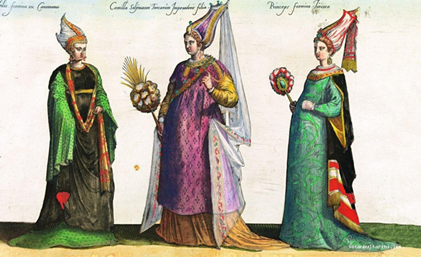
Picture 3 Karamanlı Hanım, daughter of Suleiman the Magnificent Mihrimah Sultan and Hanım Sultan's clothes (TSM, no. 17 1024;Topkapı Palece Museum). https://istanbultarihi.ist/118-osmanli-istanbulunda-giyim-kusam#gallery-
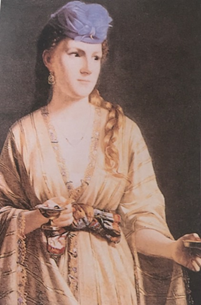
Picture 4 Woman in the harem, fancy dress called Libade (Painter Pierre Desire Guillemet, Dolmabahçe Palace, Istanbul) Melda Onur, 2000.
The transition to Western influence began in the mid-19th century with the sewing of clothes that combined the features of Western clothing. Lace, pleats, collars and bodices were used in the details of women's clothing (Tezcan, 1981).
In the 1860s, entari and shalwar were still seen in clothing. These details can also be seen in the paintings of the painter Preziosi, who worked in Istanbul. Sultan Abdülaziz's trip to Europe in 1867 clarified the breaking point of change in clothing. Leyla Saz, in her memoirs after returning from her 1867 European trip, mentioned that the interest in three skirts and shalwar had decreased.10
Following Sultan Abdülaziz's visit to Paris, the visit of Empress Eugenie, wife of French Emperor Napoleon III, to the Ottoman capital between 11-19 October 1869 had an impact on the European-style clothing practices of the palace and that of the noble women. Starting from 1870, Parisian fashion began to spread among the women of the palace and the elite women of the Ottoman capital (Picture 5).11
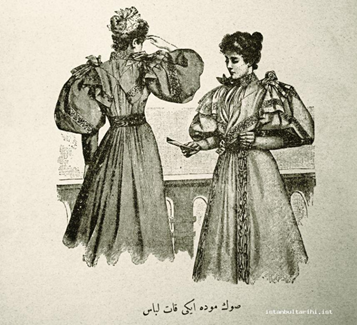
Picture 5 An advertisement showing 19th century clothing fashion (Mâlûmât Magazine), https://istanbultarihi.ist/118-osmanli-istanbulunda-giyim-kusam
While changes and developments in clothing and clothes continued, after the The Second Constitutional Era a new topic of discussion emerged. This subject is hats, and hats came to the fore as an indicator of Westernization and modernization among Muslims in the last years of the Ottoman Empire. Discussions about hats continued until the first years of the Republic.12
With the increase in the number of working women after World War I and the fact that women were more involved in social life, rather than ornate clothing they preferred clothes that would be useful and that would provide comfortable mobility.
These developments, which formed the basis of the dress code revolution during the Republic period, took their final form after the declaration of the Republic under the leadership of Gazi Mustafa Kemal ATATÜRK. Dress discrimination based on social position and belief ended with the Republic, differences between classes were eliminated, and a contemporary appearance and common identity was formed.
Hat and clothing revolution in the republican period
With the establishment of the Republic, the dress code became the basic policy of modernization efforts such as the civil code which gave women the right to divorce and to custody etc. By taking some elements of social structure from civilized societies, an attempt was made to establish a lifestyle with western clothing elements.13 In the years when Türkiye was restructured with revolutions; Changes such as 1924 Tevhid-i Tedrisat, 1925 Hat and 1934 Dress Codes also paved the way for social progress.14 Knowing that the most important revolution for the solid progress of the foundation that was to be laid after the proclamation of the Republic was the "hat revolution" and its subsequent clothing revolution, Mustafa Kemal Atatürk started the movement in Kastamonu on the 25th of August 1925. The hat revolution actually shows a symbol and the starting point of change. Mustafa Kemal Pasha, who sometimes dressed in civilian clothes during the war and struggle for National Independence, often preferred the calpack as headgear.
With the supporters of Kuvayi Milliye (Turkish militia forces) following his example, the calpack became a kind of symbol of those who supported Anatolia and the National Struggle.15 Choosing the hat to make regulations regarding attire was an important and conscious choice as it has an important function in greeting as "social status". With Atatürk appearing before the public in Kastamonu wearing a fedora, these hats became a well-known and used clothing item among farmers engaged in agriculture and animal husbandry since the 19th century (Picture 6).16
Mustafa kemal atatürk and his clothing trait
The most natural symbols of contemporary societies are contemporary clothing and clothes. Before the declaration of the Republic, there were various reform initiatives regarding dress and headgear, but the Turkish people could not achieve a modern appearance due to the combination of old and new and the shadow of bigotry on innovations. Since Ataturk witnessed how countries, societies that were behind the times which could not renew themselves were exploited and destroyed, he viewed modernization as one of the basic solutions to exist and live. For this reason, with the hat reforms of 1925 and the clothing reforms of 1934, he saved the Turkish society from its old clothes by providing it with a modern appearance (Picture 7).
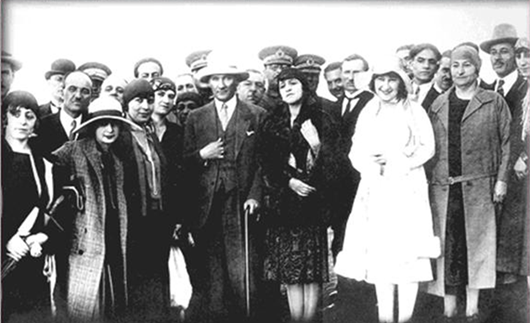
Picture 7 Officers and officers with their wives at Kastamonu Barracks during the Hat Revolution trip (August 30, 1925). https://kho.msu.edu.tr/galeri/ataturk/kronloji.html.
The conflict Turkish society had between traditional structure and modernization in clothing since the Tanzimat Period formed unity by being liberated in the Republican Period. In such changes societies have accepted leaders as role models. Mustafa Kemal Atatürk, as a leader with his innovative and contemporary perspective, stylish and original choices, and even by designing his own clothing, is among these leaders as one of its most striking examples.17 Through clothing Atatürk strengthened the communication between the changes in the world, technology, developments, and its contemporary, innovative structure with society.
Atatürk said "We must be civilized people from every point of view. Our ideas and mentality will be civilized from head to toe. Civilized and international clothing is a worthy clothing for our nation, we will wear it." On August 27, 1925, in İnebolu, he once again by saying, "There is no need to research and revive the Turanian costume. Civilized and international clothing is a worthy clothing for us, our very valuable nation." stated the necessity of accepting clothing that fits the contemporary world and lifestyle (https://kastamonu.ktb.gov.tr/TR-63803/ataturk39un-kastamonu39ya-gelisi-sapka-ve-kiyafet-inkil-.html).
The design and use of clothing is an indication in regards to both of the functions they perform. W. Enninger says, "If clothing is accepted as a sign (marking) system, it should be evaluated as a sign system not only of the individual or of people in general, but also of a social unit".18
Clothing gives information about a person's social status and their personality. It enables us to determine the way we communicate and behave with the other people. Diane Crane explains this saying “in past centuries, clothing has been the primary means of expressing identity in the public sphere. In Europe and the USA, many different dimensions of identity, such as profession, regionality, religion and social class, were expressed through clothing in accordance with the conditions of the period".16
The memories conveyed by Güneri Civaoğlu from Atatürk's adopted daughter, Sabiha Gökçen, in his article titled "From the Çankaya Window" contains important information about Atatürk's clothing style: “Atatürk stated that he took the opinions of his adopted daughters when choosing ties and costumes. He had his shoes custom-made by Altın Çizme in Istanbul. Fabrics and ties were usually gifts from abroad. His shirts and dresses were made by Monsieur Pertekiç, a tailor of Greek origin in Istanbul. "Atatürk would draw most of the models of his shirts and costumes himself and would then explain them to his tailor" (http://www. milliyet.com.tr /1998/10/29/yazar/civaoğlu.html).
G. Civaoğlu continues his article, from Prof. Gündüz Tüfekçi's work "1800 Books Read by Atatürk, the Notes He Made and the Lines He Underlined" as follows: "The name of the book: "STAY YOUNG" Author: Dr. Victor Pauchet. Atatürk said, “Be orderly in your stance, your movement, and your dressing. Always walk straight and upright to show that you are strong. Pay attention to your clothing, hair, face and hands. “Take care of your dressing, posture and underwear.” He underlined the written lines. It can be seen that Atatürk's stance and walk are not just a matter of his nature, but a reflection of a conscious culture and him portraying this to society.19 Atatürk correctly determined and used what he would wear, where he would wear it, how he would behave, and his influence on the other party. He also strongly believed that fashion would contribute to the creation of a national identity.
With the establishment of the Republic, Ataturk sent skilled craftsmen from different branches to receive training abroad. Among the craftsmen who went to Europe and received training, tailor Levon Kordonciyan went to the E. J. Malle Academy in Paris and studied there for six years. During his stay in Paris, he learned how to sew tuxedos, frock coats, jackets, bonnets, worked on sewing techniques, and learned in which social events these clothes should be worn (Picture 8).

Picture 8 Levon Kordondjian's ID card in the field of Tailoring. https://www.hurriyet.com.tr/10-kasim/ataturkun-giyim-tarzi-40011103.
When Levon Kordociyan returned to Turkey, he made tuxedos and suits for Mustafa Kemal Atatürk and the statesmen of the period. Kordociyan made the tuxedo that Atatürk wore at the dinner he gave for the Shah of Iran at the Çankaya mansion in 1934. (https://www.gazeteduvar.com.tr/hayat/2020/05/17/agopyan-handan-dunyaya-kordonciyan-ailesi) (Picture 9).
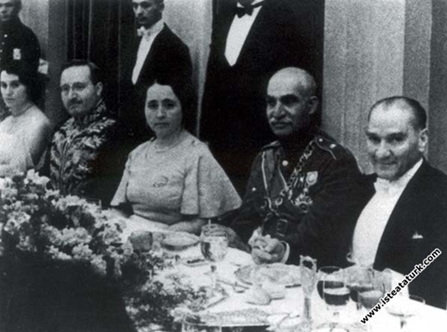
Picture 9 Ataturk welcoming the Shah of Iran. Dinner at Çankaya (16.06.1934) https://isteataturk.com/Kronloji/Tarih/1934/6/16/Mustafa-Kemal-Ataturk-Cankaya-Koskunde-Iran-Sahi-Riza-Pehlevi-onuruna-verdigi-yemekten-16061934/43
Due to Atatürk's interest in clothing and him being a role model, he took great care to dress appropriately according to his social area and place. In particular, he had the clothes he would wear during ceremonies sewn and brought from Paris. Later, by having his clothes sewn by craftsmen who received tailoring training in Paris, he showed the society the characteristics of tailoring and sewing techniques of modern societies (Picture 10).
The cloak is one of the important elements of the history of clothing. It is understood that Atatürk showed elegance, poise and dominance by using the cloak not as a clothing but as a part of his body. In her book "The Veteran's Last Witnesses Tell: He Was Always Stylish", prepared with interviews by Hasan Yelmen and Emre Kongar, Füreya Koral says as follows: "Atatürk was my father's friend from the military, and one day when I was nine years old, he came to the station to see us off. He was wearing a black cloak and I had never seen a cloak before. I don't think there were capes in Istanbul, but Ataturk made wearing a cape a tradition. "All the women at the station were looking at me asking, 'Who is this handsome man in the black cloak?'" (Pictures 11–13).20
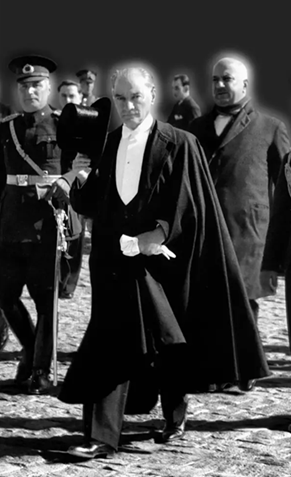
Picture 11 On the way to the opening of the Turkish Grand National Assembly in 1936 https://bonherre.com/blogs/news/ataturk-un-giyimi-zamansiz-bir-stil.
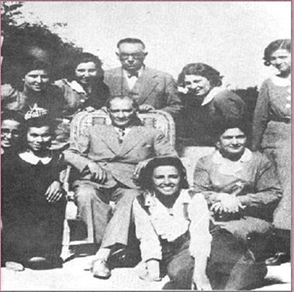
Picture 12 At Gazi Forest. With Adana Girls' High School Students, 1937 https://kho.msu.edu.tr/galeri/ataturk/kronloji.html.
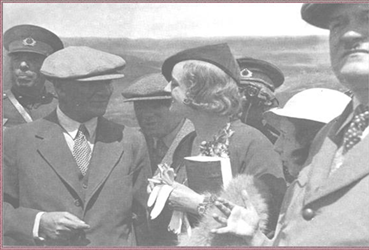
Picture 13 Answering the questions of a British female journalist at Gazi Forest. https://kho.msu.edu.tr/galeri/ataturk/kronloji.html.
Atatürk, with a collared shirt called Ata named after him, portrayed a stylish statesman along with his striped and plaid suits, golf trousers, silk underwear, ties, vests, suits and patent leather shoes that complemented his clothing. After the proclamation of the Republic, he took care to wear civilian clothes. However, he wore his uniform when necessary for state matters (Picture 14).

Picture 14 Clothing examples from Atatürk's civilian life. https://bonherre.com/blogs/news/ataturk-un-giyimi-zamansiz-bir-stil.
Atatürk brought together elegance with a timeless clothing style and reflected this to society as an indicator of modernity and a form of communication. He made sure that every jacket he wore fit his body, and he made sure to have his trousers loose-fitting to make him look taller, and he described some of the models to his tailor by drawing them. He preferred to have his shirts sewn from silk and linen fabric. It can be seen in Atatürk's photographs that he combined silk shirts with formal clothes and linen shirts with sports casual clothes.21–32
Clothing is an important way to convey the messages which cannot be adequately expressed through words. A clothing style that suits his personality is an indispensable formation for a leader. Atatürk, the leader of the Republic of Türkiye, is a rare personality who has these characteristics when it comes to creating his own clothing style and giving society a new identity, character structure. His success in bringing society to the level of contemporary civilization by using visuals as a means of communication through clothing is indisputable.
During the process of giving society a new identity he can be considered as the only leader who created the chance to be among the people, to talk to them, and also make society resemble himself by revealing his humility through his stance, ideas, and by listening to others. He showed Turkish society the method of modern thinking without giving up its traditions and cultural background. He explained through his own clothing that one of the first stages of reaching a level of contemporary civilization is to have the same dressing characteristics as Western societies. Atatürk led the rapid progress of Turkish society towards modernization with the regulations made on education-culture, law, politics, economy and daily life.
Ataturk's thoughts and the revolutions he wanted to make, he focused on ensuring that society rediscovered its own existence while preserving its cultural identity. With this care, the history, language, traditions and culture of Turkish society were used as basic dynamics.
The proclamation of the Republic and the modernization efforts, the first step of which was taken with the hat revolution under the leadership of Atatürk, have achieved the goal of Turkish society becoming a part of contemporary civilization while preserving its own identity (Picture 15).
None.
None.
The author declares that there is no conflict of interest.

©2024 İmre. This is an open access article distributed under the terms of the, which permits unrestricted use, distribution, and build upon your work non-commercially.